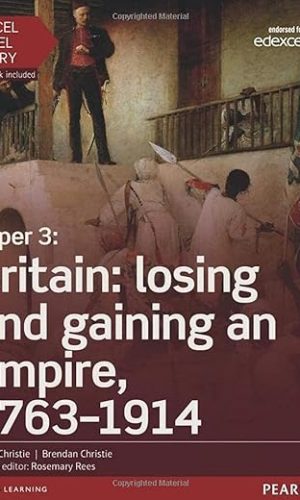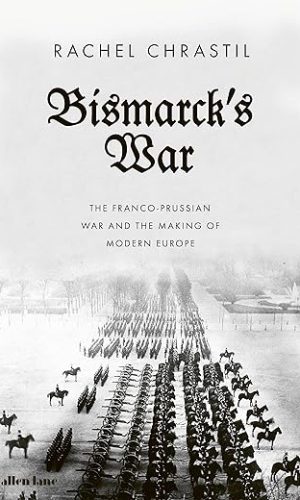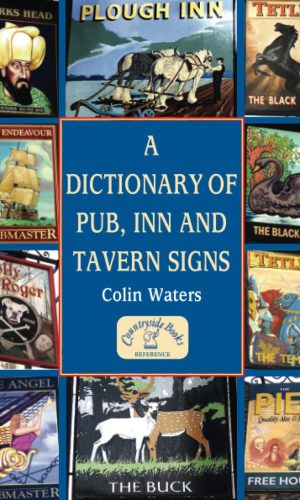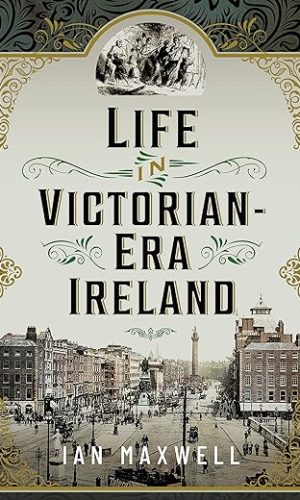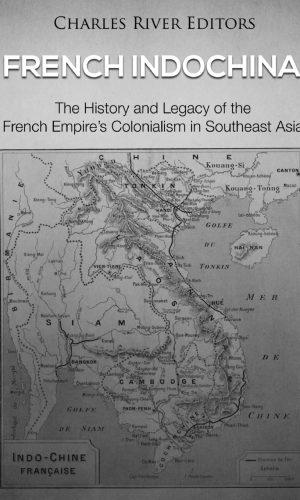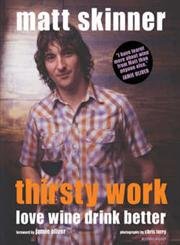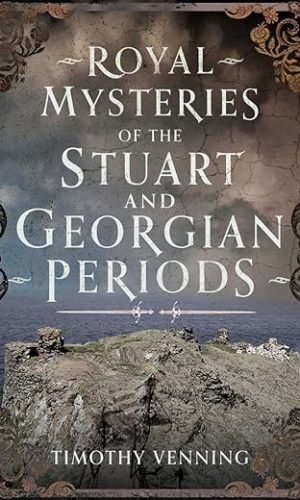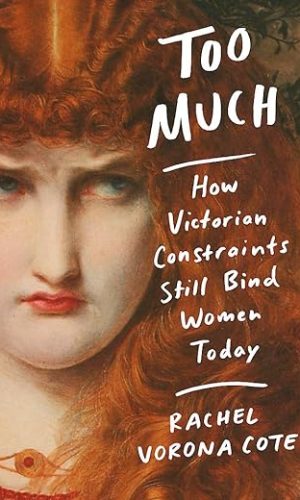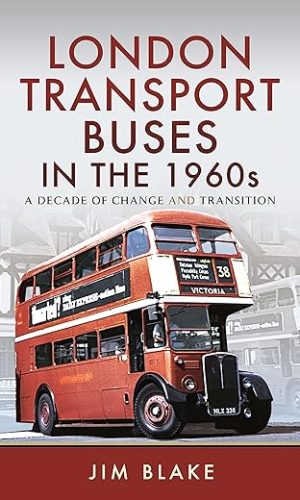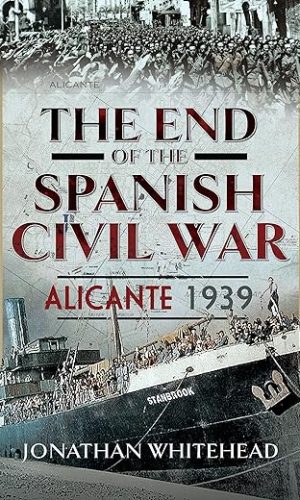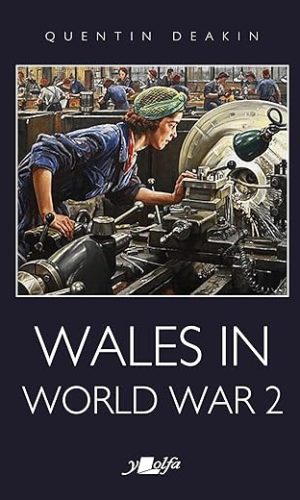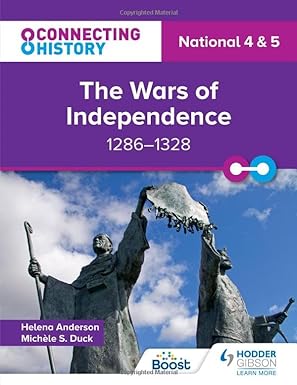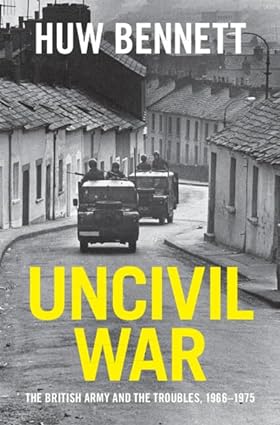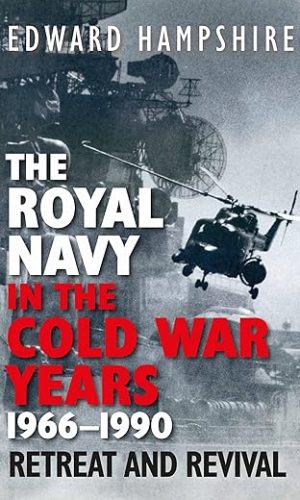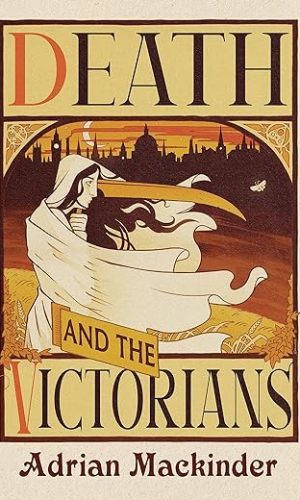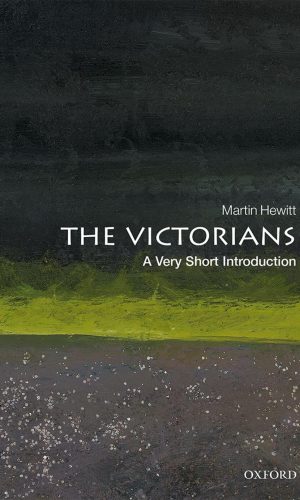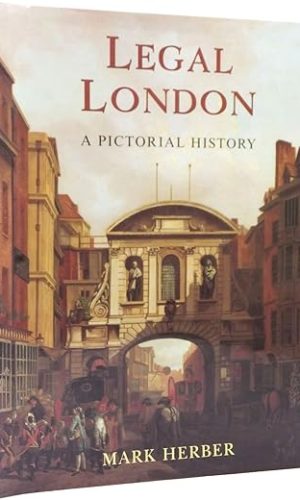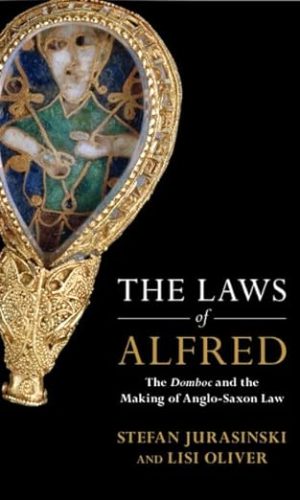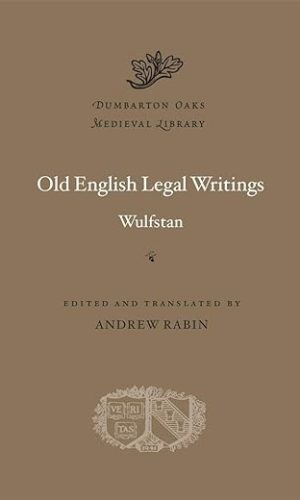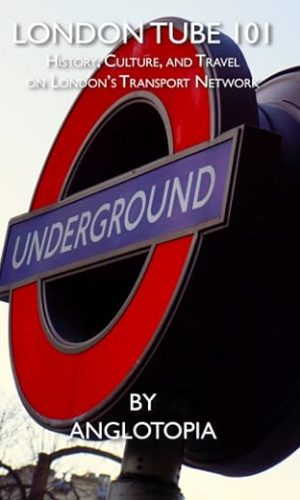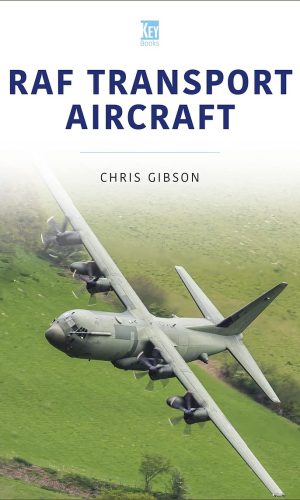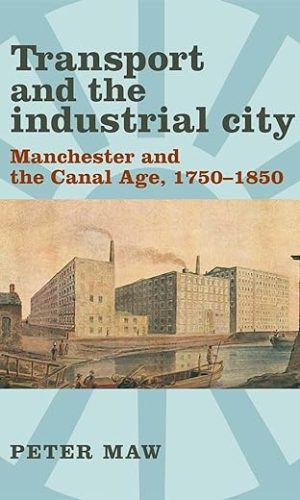Europe
-
Edexcel A Level History, Paper 3: Britain: losing and gaining an empire, 1763-1914 Student Book + ActiveBook (Edexcel GCE History 2015)
This book:
- covers the essential content in the new specifications in a rigorous and engaging way, using detailed narrative, sources, timelines, key words, helpful activities and extension material
- helps develop conceptual understanding of areas such as evidence, interpretations, causation and change, through targeted activities
- provides assessment support for A level with sample answers, sources, practice questions and guidance to help you tackle the new-style exam questions.
It also comes with three years’ access to ActiveBook, an online, digital version of your textbook to help you personalise your learning as you go through the course – perfect for revision.
Read more
£19.90£21.60 -
Private Life in Britain’s Stately Homes: Masters and Servants in the Golden Age (Brief Histories)
The Victorian and Edwardian eras in the run-up to 1914 marked the golden age of the English country house, when opulence and formality attained a level that would never be matched again. The ease of these perfect settings for flirtation and relaxation was maintained by a large and well-trained staff of servants. Although those ‘in service’ worked very long hours and had little personal freedom, many were proud of their positions and grateful for the relative security these gave. Indeed, the strictly hierarchical world below stairs could be more snobbish than that of a house’s owners. Michael Paterson skilfully and entertainingly explores the myths and realities of this vanished world, both upstairs and down.Read more
£2.80 -
Bismarck’s War: The Franco-Prussian War and the Making of Modern Europe
‘Compassionate and thought-provoking history’ Daily Telegraph
‘Superb on the human consequences of war, ravishing in its evocations of wartime life’ The Times
‘Fresh and compelling … a tour-de-force’ David A. Bell
Less than a month after it marched into France in summer 1870, the Prussian army had devastated its opponents, captured Napoleon III and wrecked all assumptions about Europe’s pecking order. Other countries looked on in helpless amazement. Pushing aside further French resistance, a new German Empire was proclaimed (as a deliberate humiliation) in the Palace of Versailles, leaving the French to face civil war in Paris, reparations and the loss of Alsace and Lorraine.
Bismarck’s War tells the story of one of the most shocking reversals of fortune in modern European history. The culmination of a globally violent decade, the Franco-Prussian War was deliberately engineered by Bismarck, both to destroy French power and to unite Germany. It could not have worked better, but it also had lurking inside it the poisonous seeds of all the disasters that would ravage the twentieth century.
Drawing on a remarkable variety of sources, Chrastil’s book explores the military, technological, political and social events of the war, its human cost and the way that the sheer ferocity of war, however successful, has profound consequences for both victors and victims.
Read more
£24.50£28.50 -
On the Road to Victory: The Rise of Motor Transport with the BEF on the Western Front
The story of a revolution in moving troops and supplies: “A rare gem that will fill a gap in your World War I library. Highly recommended.” —Indy Squadron DispatchThe Great War produced many innovations, in particular the spectacular development by the British and French armies of motor transport.
The age-old problem of moving soldiers and their supplies was no different in 1914 than it had been some 2,400 years ago, when the great Chinese military thinker Sun Tzu informed his readers that the further an army marched into enemy territory, the more the cost of transport increased, even to the point that more supplies were consumed by the transportation of men and their horses than was delivered to the troops.
Using many previously unpublished illustrations, including artists’ impressions, this book tells the story of the men and women who made motor transport work for the victorious British Army on the Western Front, so that in 1918, the humble lorry did indeed help propel the British Army forward on the road to victory.
Read more
£4.70 -
The Seaside: England’s Love Affair
“…a fascinating barometer of the state of the nation right now, in the wake of austerity, Brexit and Covid.” – Travis Elborough
England’s seaside is made up of a striking variety of coastlines including cliffs, coves, pebbled shore, wide sandy beaches, salt marshes, and estuaries cutting deep inland. On these coastal edges England’s great holiday resorts grew up, developed in the early eighteenth century originally as spas for medicinal bathing but soon morphing into places of pleasure, entertainment, fantasy and adventure.
Acclaimed writer Madeleine Bunting journeyed clockwise around England from Scarborough to Blackpool to understand the enduring appeal of seaside towns, and what has happened to the golden sands, cold seas and donkey rides of childhood memory. Taking in some forty resorts, staying in hotels, caravans and holiday camps, she swims from their beaches and talks to their residents to delve into their landscapes, histories and contemporary plight.
Read more
£11.90£19.00The Seaside: England’s Love Affair
£11.90£19.00 -
A Dictionary of Pub, Inn and Tavern Signs: An A-Z Reference Guide to Pub Names – Their meaning, origin and history
There are few things that symbolise British culture better than the good old-fashioned pub. Over centuries, their colourful hanging signs have become an integral part of the country’s backdrop. But how much do you really know about the names of these pubs, and how they came to have them?
Have you ever found yourself at the Red Lion, the Swan with Two Necks, the Jolly Roger, the Golden Fleece or the Beetle & Wedge, and stopped to wonder how it came by its name? Or what that name might reveal about the history of the building?
The answers to all these questions, and hundreds more, are contained with A Dictionary of Pub, Inn and Tavern Signs.
Here you’ll find out how public drinking houses have changed through history, progressing from the simple custom of hanging grapes outside to boards depicting a name and illustration; how, after the Norman Conquest, some inn-keepers found themselves obliged to display elements of their new lord’s coat of arms – a lion, griffin, deer or hart; how some pubs’ names (the Plough & Harrow or the Three Horseshoes, for example), came to represent the livelihoods of many of the inn’s customers.
This illustrated reference book, arranged alphabetically, provides a brief guide to the meaning, origin and history of these names and sheds light on an important part of Britain’s heritage.
Colin Waters is also the author of A Dictionary of Old Trades, Titles and Occupations and A Dictionary of Saints’ Days, Fasts, Feasts & Festivals.
Read more
£10.40 -
Air Transport Auxiliary at War: 80th Anniversary of its Formation
This book looks at the invaluable work carried out by members of the Air Transport Auxiliary during the course of the Second World War. Comprised of both men and women, it was a civilian organisation tasked with the collection and delivery of military aircraft from the factories to the RAF and Royal Navy stations. Men who undertook the role had to be exempt from having to undertake war time military service due to health or age, but other than that there were very few restrictions on who who could join, which accounted for one-legged, one-armed, one-eyed and short sighted pilots being accepted. Initially it was only men who were allowed to carry out this service, but by December 1939, British authorities were persuaded by Pauline Gower (the daughter of Sir Robert Vaughan Gower, a wartime Conservative MP, and an accomplished pilot in her own right), to establish a women’s section of the Air Transport Auxiliary, of which she was put in charge. The first eight women were accepted in to the service, but it would not be until 1943 that its male and female members received the same pay. By the end of the war 147 different types of aircraft had been flown by the men and women of the Air Transport Auxiliary, including Spitfire fighter aircraft and Lancaster bombers. These brave pilots were not just British, but came from 28 Commonwealth and neutral countries and their efforts sometimes came at a price: 174 Air Transport Auxiliary pilots, both men and women, died during the war whilst flying for the service.Read more
£11.60£14.20 -
Life in Victorian Era Ireland
There are many books which tackle the political developments in Ireland during the nineteenth century. The aim of this book is to show what life was like during the reign of Queen Victoria for those who lived in the towns and countryside during a period of momentous change. It covers a period of sixty-four years (1837-1901) when the only thing that that connected its divergent decades and generations was the fact that the same head of state presided over them. It is a social history, in so far as politics can be divorced from everyday life in Ireland, examining, changes in law and order, government intervention in education and public health, the revolution in transport and the shattering impact of the Great Famine and subsequent eviction and emigration. The influence of religion was a constant factor during the period with the three major denominations, Roman Catholic, Anglican and Presbyterian, between them accounting for all but a very small proportion of the Irish population. Schools, hospitals, and other charitable institutions, orphan societies, voluntary organisation, hotels, and even public transport and sporting organisations were organised along denominational lines. On a lighter note, popular entertainment, superstitions, and marriage customs are explored through the eyes of the Victorians themselves during the last full century of British rule.Read more
£17.30£19.00Life in Victorian Era Ireland
£17.30£19.00 -
The London Underground, 1968-1985: The Greater London Council Years
LONDON’S HISTORIC, iconic Underground railway system in the period from 1968 to 1985 was a very different place to what it is in the 2020s. Much of its rolling stock dated from before World War Two, and with the exception of the new Victoria Line and the isolated Woodford to Hainault shuttle, trains were all two-person operated as the 1970s dawned. Transport photographer Jim Blake recorded most of the system on film before it would change forever, concentrating on the older rolling stock as well as other items of interest due for replacement or modernisation, during this period when, regrettably, London Transport was often starved of much-needed funds by central government. The eminently sensible transfer of overall control of London’s buses and Underground system to the city-wide Greater London Council at the beginning of 1970 was snatched away by the Thatcher regime in 1984, after which things rapidly went downhill. This book covers the years of GLC control, including the months prior to their taking charge in order to set the scene. Many rare and unusual scenes are included in this volume, especially of the then still basically intact portion of the uncompleted Northern Line extension between Drayton Park and Highgate, which had been so close to completion when work was halted during the war, but then abandoned in the early 1950s, incurring much wasted work and expenditure. For anyone with a serious interest in London’s Underground, this book is essential reading, including as it does many pervious unpublished photographs.Read more
£20.00£23.80 -
French Indochina: The History and Legacy of the French Empire’s Colonialism in Southeast Asia
*Includes pictures
*Includes online resources and a bibliography for further reading
“Without Empire France today would only be a liberated country. Thanks to her Empire she is today a victorious country.” – French Guianan lawyer and politician, Gaston Monnerville
The U.S. Naval Station Argentia, located in Placentia Bay, a sheltered harbor on Newfoundland Island, was the unlikely setting for one of the most pivotal summit meetings of the 20th century. The meeting took place on August 9, 1941. World War II was in its second year, the British had won the Battle of Britain, but were still encircled by German U-Boats, and the British fleet was being decimated in the North Atlantic. In North Africa, a contest of armor was underway as Axis and Allied armies fought for control of Egypt, while Britain and her Commonwealth allies stood alone against the mighty German Wehrmacht.
Roosevelt, however, pictured a very different post-war world than his British counterpart, Winston Churchill. When he and Churchill met at what came to be known as the Atlantic Conference, Churchill’s pleas for U.S. manpower and aid were accepted, but only under clear conditions. If the United States was to come to the aid of Britain, it would be for the purpose of defeating the Germans and the Japanese and not to support the insupportable institutions of empire. Britain and, by extension, France and Portugal, the only remaining major European shareholders in foreign empire, would have to commit to decolonization as a basic prerequisite of substantial U.S. assistance.
Churchill, a vocal and forceful proponent of empire and a man of the generation that had conquered the world, did not receive this news well. On the other side of the world, British and allied European Asian colonies lay very much in the path of the Japanese imperial march into Southeast Asia. However, as the inevitability of war grew daily, the nationalist movement in India was also beginning to gather pace. Without India and Indian manpower, war with Japan would be lost before it could begin. The Indians in a sense could hold the British hostage, and ultimately, in exchange for Indian cooperation in the war, the British would first have to commit to a post-war independence process.
Meanwhile, the British were not the only European power to take note of this development. The French too were a major imperial power with a great deal to lose from such a monumental change, but their view of the global chessboard was somewhat different. France lay under German occupation, and an armistice had been signed on behalf of the French nation by Marshall Philippe Pétain, commencing the era of Vichy France. In London, meanwhile, the firebrand French General Charles de Gaulle urged a continuation of the resistance, believing the French mainland to be only a small part of the picture. France was much more than just France. De Gaulle established the Free French movement in Britain, based on the loyalty and the ongoing Free French control of a majority of her overseas territories. The Free French movement and the Free French army based themselves in Francophone Africa. The saga of the Free French movement would impact the war in both North Africa and Europe, but most specifically, it would serve to radically redefine the French view of itself and her relationship with her overseas territories. Most importantly, it would set the tone for a style of decolonization very different from the British, and perhaps not surprisingly, things would not go smoothly, especially with the geopolitics of the Cold War affecting matters.
French Indochina: The History and Legacy of the French Empire’s Colonialism in Southeast Asia analyzes the colonization of Southeast Asia and what happened as a result of the decolonization. Along with pictures of important people, places, and events, you will learn about the French in Southeast Asia like never before.Read more
£8.00 -
Thirsty Work: Matt Skinner
Serious but unpretentious, inspiring and fun, Thirsty Work celebrates wine and all that goes into making it and all who are involved in sharing it. Based on the way he teaches the subject of wine to his students at Fifteen, Matt Skinner breaks down all the information you need to feel confident when choosing and drinking wine. All the key topics in wine are covered – from how to taste to the key grapes; where and how wine is made to the range of styles – and his 24 “hour faces of wine” working around the clock, feature all the people who are involved in bringing wine to your table. In everyday terms, Skinner presents his subject on a unique and personal level.Read more
£0.50 -
Royal Mysteries of the Stuart and Georgian Periods
Both interesting and disturbing, learn all about the alleged attempt to murder James I and VI before the became King of England, the plots at court involving ‘poisoned tarts’, to the marriage court scandal of George III.‘There is nothing new under the sun’, a phrase ascribed originally to King Solomon, applies to the present book, with echoes of ‘modern’ themes exposing royal scandal, sex, corruption, political absolutism – attempted – religious controversy, danger of mass-terrorism, murder and ‘suspicious’ deaths, ‘fake news’ and international threat from superpowers. And all focusing on inside stories which today would be ‘investigative journalism’ with huge popular media interest. This is history for both specialists and, especially, for general readers, given media interest, including TV and film coverage in ‘exciting’ popular history, as set out by the author.
The earlier ‘Royal Mysteries’ in the series were full of tragedy, suffering, pathos, heroism and romance, but the present set are equally interesting and disturbing and revisionist. These include the alleged attempt to murder James I and VI before the became King of England; the scandal at court involving ‘poisoned tarts’, James’ ‘toy-boy’, and a subsequent murder trial. And the following questions and mysteries: did Charles II really promise to convert to Catholicism to please Louis XIV; did Charles marry his mistress Lucy Walter, mother of rebel Duke of Monmouth; was James II and VII an enlightened religious reformer or trying to convert England to Catholicism – the religion of European superpowers; did George I ‘disappear’ (a ‘hit’ in modern terms) his divorced wife’s lover before ascending the English throne; did the unpopular Duke of Cumberland murder his gay lover; did the hugely admired ‘respectable’ George III, devoted husband and father, marry a middle-class Quaker woman?
Read more
£9.50 -
British Independent Buses in the 2000s
Roaring through the millennium into the twenty-first century we find the Transport Act 2000 that allows for increased cooperation between local authorities and operators, something that had not been allowed previously under competition legislation. Increasingly through the 2000s local authorities and county councils are taking responsibility for funding local bus services. The vehicles in use are changing as more and more operators invest in accessible buses. By the beginning of 2008, towards the end of the period covered by this book, 58 per cent of the UK bus fleet is low-floor. Again, we see the demise of some well-known operators, the takeover of some by the big bus groups, and, on the plus side, the rise in importance of others. Illustrated with previously unpublished images, this volume portrays the vehicles in use with independent companies through the first decade of the twenty-first century.Read more
£11.20£14.20British Independent Buses in the 2000s
£11.20£14.20 -
A Nasty Little War: The West’s Fight to Reverse the Russian Revolution
‘A vivid and sparkling account, full of colour and dark drama’ The Observer
‘Chillingly original’ Max Hastings, ‘Pick of the Week’, The Times
‘Brilliantly depicts a disastrous failure’ Antony Beevor
‘Witty and elegant . . . Excellent background to today’s events’ Anne Applebaum
‘Britain’s most forgotten war, brilliantly remembered’ Simon Jenkins
‘Vivid and remarkably timely’ Martin Sixsmith
From the bestselling author of Borderland: A Journey Through the History of Ukraine
The extraordinary story of how the West tried to reverse the Russian Revolution.
In the closing months of the First World War, Britain, America, France and Japan sent arms and 180,000 soldiers to Russia, with the aim of tipping the balance in her post-revolutionary Civil War. From Central Asia to the Arctic and from Poland to the Pacific, they joined anti-Bolshevik forces in trying to overthrow the new men in the Kremlin, in an astonishingly ambitious military adventure known as the Intervention.
Fresh, in the case of the British, from the trenches, they found themselves in a mobile, multi-sided conflict as different as possible from the grim stasis of the Western Front. Criss-crossing the shattered Russian empire in trains, sleds and paddlesteamers, they bivouacked in snowbound cabins and Kirghiz yurts, torpedoed Red battleships from speedboats, improvised new currencies and the world’s first air-dropped chemical weapons, got caught up in mass retreats and a typhus epidemic, organised several coups and at least one assassination. Taking tea with warlords and princesses, they also turned a blind eye to their Russian allies’ numerous atrocities.
Two years later they left again, filing glumly back onto their troopships as port after port fell to the Red Army. Later, American veterans compared the humiliation to Vietnam, and the politicians and generals responsible preferred to trivialise or forget. Drawing on previously unused diaries, letters and memoirs, A Nasty Little War brings an episode with echoes down the century since vividly to life.
Read more
£19.00£23.80 -
Royal Trivia: Your Guide to the Modern British Royal Family
From Queen Elizabeth II to Prince George, there’s a lot of news to keep up with regarding the royal family. This fantastic compendium of fascinating facts and stories about the British monarchy will keep you in the know about your favourite modern royals. From iconic weddings, fashion moments, philanthropic events, and the birth of new royals, this book has the latest and most interesting tidbits perfect for any enthusiast. Inside you’ll find the royal scoop, including: The official line of succession to the throne, the royal family’s favourite designers and artists, amazing details about coronations, weddings, and other ceremonies, jaw-dropping facts about the Crown Jewels, and much more!Read more
£11.60£14.20 -
Too Much: How Victorian Constraints Still Bind Women Today
Lacing cultural criticism, Victorian literature, and storytelling together, Too Much explores how culture corsets women’s bodies, souls, and sexualities – and how we might finally undo the strings.
Written in the tradition of Shrill, Dead Girls, Sex Object and other frank books about the female gaze, Too Much encourages women to reconsider the beauty of their excesses – emotional, physical, and spiritual.
Rachel Vorona Cote braids cultural criticism, theory, and storytelling together in her exploration of how culture grinds away our bodies, souls, and sexualities, forcing us into smaller lives than we desire. An erstwhile Victorian scholar, she sees many parallels between that era’s fixation on women’s ‘hysterical’ behavior and our modern policing of the same; in the space of her writing, you’re as likely to encounter Jane Eyre and Lizzie Bennet as you are Britney Spears and Lana Del Rey. This book will tell the story of how women, from then and now, have learned to draw power from their reservoirs of feeling, all that makes us ‘too much’.
Read more
£3.70£19.00 -
London Transport Buses in the 1960s: A Decade of Change and Transition
Just as life in Britain generally changed dramatically during the 1960s, so did London Transport’s buses and their operations. Most striking was the abandonment of London’s trolleybuses, once the world’s biggest system, and their replacement by motorbuses. Begun in 1959 using surplus RT-types, it was completed by May 1962 using new Routemasters, designed specifically to replace them. They then continued to replace RT types, too. Traffic congestion and staff shortages played havoc with London Transport’s buses and Green Line coaches during the 1960s, one-man operation was seen as a remedy for the latter, shortening routes in the Central Area for the former. Thus the ill-fated “Reshaping Plan” was born, introducing new O.M.O. bus types. These entered trial service in 1965, and after much delay the plan was implemented from September 1968 onwards. Sadly, new MB-types, also introduced in the Country Area, soon proved a disaster! Unfortunately, owing to a government diktat, Routemaster production ended at the start of 1968, forcing LT to buy “off-the-peg” vehicles unsuited to London operation and their in-house overhaul procedures. The decade ended with the loss of LT’s Country Area buses and Green Line coaches to the National Bus Company. Photographer Jim Blake began photographing London’s buses towards the end of the trolleybus conversion programme in 1961 and continued dealing with the changing scene throughout the decade. He dealt very thoroughly with the “Reshaping” changes, and many of the photographs featured herein show rare and unusual scenes which have never been published before.Read more
£20.00£23.80 -
The Napoleonic Wars (1805 – 1815)
The Napoleonic Wars (1805 – 1815) were an epoch of unprecedented upheaval and destruction that reshaped the landscape of the history of ancient France and the broader European continent. In this comprehensive book, we embark on a captivating journey through this tumultuous decade, offering a detailed exploration of the triumphs and tragedies that marked Napoleon Bonaparte’s reign as the self-crowned Emperor of the French.
From the brilliance of Napoleon’s early victories, including his masterpiece at Austerlitz in 1805 and the smashing of Prussia at Jena in 1806, to the catastrophic invasion of Russia in 1812 and the bloodiest day at Borodino, we traverse the peaks and valleys of his fortunes. This narrative takes us through the horrors of the French occupation of Spain and Portugal, the great struggles of 1813, and Napoleon’s doomed defense of Paris in 1814. Along this historical voyage, we encounter moments of military genius and fatal blunders that left an indelible mark on the history of ancient France.
The climax of this narrative occurs in 1815, where we bear witness to history’s most renowned generals meeting on the battlefield for the first and only time: Napoleon Bonaparte, Emperor of the French, and the Duke of Wellington. The epic and brutal Battle of Waterloo unfolds, ultimately determining the fate of Europe.
This book provides a comprehensive chronicle of the entire span of the Napoleonic Wars, from the zenith of Napoleon’s power in 1805 to his final defeat at Waterloo in 1815. It is a compelling journey through one of the most captivating and tumultuous periods in history, interwoven with the grand campaigns, dramatic battles, and the rise and fall of an extraordinary leader, all set against the backdrop of the history of ancient France.
Order your copy now!
Read more
£4.70 -
The Hundred Years War: 1337–1453 (Essential Histories)
An illustrated overview of the Hundred Years War, the longest-running and the most significant conflict in western Europe in the later Middle Ages.There can be no doubt that military conflict between France and England dominated European history in the 14th and 15th centuries. The Hundred Years War is of considerable interest both because of its duration and the number of theatres in which it was fought.
Drawing on the latest research for this new edition, Hundred Years War expert Professor Anne Curry examines how the war can reveal much about the changing nature of warfare: the rise of infantry and the demise of the knight; the impact of increased use of gunpowder and the effect of the war on generations of people.
Updated and revised for the new edition, with full-colour maps and 50 new images, this illustrated introduction provides an important reference resource for the academic or student reader as well as those with a general interest in late medieval warfare.
Read more
£9.50£12.30 -
The End of the Spanish Civil War: Alicante 1939
The Spanish Civil War ended in Alicante. After Catalonia fell to the Hitler and Mussolini backed military rebellion of Franco’s Nationalists at the outset of 1939, the legitimate Republican government of Dr Negrín was faced with a choice between apparently futile resistance or unconditional surrender to the triumphant Nationalists. Choosing the path of continued defiance until they could force concessions or at least implement a mass evacuation of those Republicans most at risk in Franco’s new Spain, the government withdrew to Elda in the province of Alicante. However, their plans were thwarted by a new rebellion of Republican officers, led by Colonel Segismundo Casado, who resented Negrín’s reliance on the Communist Party and the USSR and believed themselves better equipped to negotiate a peace settlement with Franco. They were misguided, Franco had no wish, and ultimately no need to negotiate. Meanwhile, faced with the imminent risk of arrest by the new junta, the Prime Minister and his cabinet were forced to abandon Spain from the tiny aerodrome of Monóvar. A relatively quiet port on the eastern, Mediterranean coast of Spain, Alicante had remained at some distance from the frontlines throughout the fighting on the ground, but swiftly became a target for Italian bombers operating out of bases in the Balearic Islands. In May 1938, at the height of the air offensive, Italian bombers attacked the marketplace, causing a massacre as tragic as the events in Guernica, yet largely ignored by historians. As the war drew towards its conclusion, Alicante became increasingly significant as attention focused on the plight of the defeated Republicans. In the second half of March 1939, the fronts collapsed, and Madrid finally fell to the insurgents. Tens of thousands of refugees descended on Alicante in the forlorn hope of rescue by French and British ships that had been promised but which failed to materialise. Amid the tragedy, as the British and French governments declined to engage in any humanitarian intervention that might offend Hitler and Mussolini, a single hero emerged; Captain Archibald Dickson, the Welsh master of the Stanbrook who ditched his cargo and transported 3,000 refugees to safety in North Africa. On 30 March 1939, Franco’s vanguard, the Italian ‘Volunteer’ Corps under General Gastone Gambara, occupied a town already under the control of the Fifth Column. Two days later the Generalísimo issued a communiqué from his headquarters in Burgos, declaring that the war was over. The bulk of the Republicans surrounded and captured in the port were marched to an improvised internment camp, known as the Campo de los Almendros (Field of Almond Trees). They were then transferred to the infamous concentration camp at Albatera to share the fate of defeated Republicans across Spain and to undergo the programme of ideological cleansing of the new fascist authorities.Read more
£20.00£23.80The End of the Spanish Civil War: Alicante 1939
£20.00£23.80 -
Wales in World War 2: Wales in World War II
The most comprehensive study to date of Wales’ role in the British response to World War II, and the impact of the war on Wales itself. Wales was vital to the war effort, from military training to public entertainment, from hosting several of Britain’s most secretive weapons programs to housing 110,000 child evacuees, from the war economy to food security. The devastating 1940 blitz in the cities of the south is well known, but the book covers every region comprehensively. Politicians, civil servants and civilian volunteers; miners, steelworkers, farmers, factory workers and entertainers; local children, host families and evacuees; new recruits, soldiers, prisoners of war and pacifists – the book looks at the experience of every part of the population present in Wales during the war. Long-standing tensions between the Welsh people and the English authorities meant for a sometimes strained relationship, affecting the role of film, radio and the arts in propaganda directed to audiences in the home. The book also looks at the legacy of the conflict on Wales after the war.A well-researched, well-written account and analysis drawing on a wide range of sources. It provides international context but also the experiences of regions, communities and individuals. A major advance in writing on this still rather neglected topic. – Dr Neil Evans, Honorary Research Fellow, Bangor University
World War II was a defining moment in the history and the lives of many Welsh people. Yet it has been relatively neglected by historians of Wales. This book sets out to correct that omission with a well-researched account of a war that changed the very course of the history of the nation. – Professor Martin Johnes, Dept of History, Heritage and Classics, Swansea University
Comprehensively researched, with an eloquent yet easy-to-read narrative, this book is highly recommended for anyone wishing to learn about a neglected piece of twentieth-century history: the experiences of World War 2 in Wales. – Kate Sullivan, Project Coordinator, ‘People’s Voices in a People’s War: Aberystwyth, 1938-1945
Read more
£13.50£14.20Wales in World War 2: Wales in World War II
£13.50£14.20 -
Connecting History: National 4 & 5 The Wars of Independence, 1286–1328
Exam board: SQA
Level: National 4 & 5
Subject: History
First teaching: September 2017
First assessment: Summer 2018Fresh stories, fresh scholarship and a fresh structure. Connecting History informs and empowers tomorrow’s citizens, today.
Bringing together lesser-told narratives, academic excellence, accessibility and a sharp focus on assessment success, this series provides a rich, relevant and representative History curriculum.
> Connect the past to the present. Overarching themes of social justice, equality, change and power help students to understand the importance of events and issues, then and now.
> Go far beyond other resources. With respect and aspiration for the transformative power of History, this series incorporates the latest research, challenges old interpretations and embeds diverse experiences throughout.
> Follow a clear and consistent structure. The key issues in the N5 specification form the chapters in each book, and the content descriptors are subheadings within the chapters. Finding the information that you need has never been easier.
> Meet the demands of the assessments. Connecting History develops the knowledge and skills for success, with appropriate breadth, depth and pace. The narrative and sources take centre stage and the authors model the process of answering questions effectively through that narrative, ensuring that students know all the key points that they need to. Activities throughout each chapter consolidate and extend learning.
> Benefit from pedagogic and academic expertise. The authors are highly experienced teachers and examiners who know how to spark critical curiosity in students. Each book has been rigorously reviewed by an academic from the University of Glasgow, so you can rest assured that the content is accurate and up to date.
Read more
£16.10 -
Connecting History: National 4 & 5 The Era of the Great War, 1900–1928
Exam board: SQA
Level: National 4 & 5
Subject: History
First teaching: September 2017
First assessment: Summer 2018Fresh stories, fresh scholarship and a fresh structure. Connecting History informs and empowers tomorrow’s citizens, today.
Bringing together lesser-told narratives, academic excellence, accessibility and a sharp focus on assessment success, this series provides a rich, relevant and representative History curriculum.
> Connect the past to the present. Overarching themes of social justice, equality, change and power help students to understand the importance of events and issues, then and now.
> Go far beyond other resources. With respect and aspiration for the transformative power of History, this series incorporates the latest research, challenges old interpretations and embeds diverse experiences throughout.
> Follow a clear and consistent structure. The key issues in the N5 specification form the chapters in each book, and the content descriptors are subheadings within the chapters. Finding the information that you need has never been easier.
> Meet the demands of the assessments. Connecting History develops the knowledge and skills for success, with appropriate breadth, depth and pace. The narrative and sources take centre stage and the authors model the process of answering questions effectively through that narrative, ensuring that students know all the key points that they need to. Activities throughout each chapter consolidate and extend learning.
> Benefit from pedagogic and academic expertise. The authors are highly experienced teachers and examiners who know how to spark critical curiosity in students. Each book has been rigorously reviewed by an academic from the University of Glasgow, so you can rest assured that the content is accurate and up to date.
Read more
£16.10 -
Uncivil War: The British Army and the Troubles, 1966–1975 (Cambridge Military Histories)
When Operation Banner was launched in 1969 civil war threatened to break out in Northern Ireland and spread over the Irish Sea. Uncivil War reveals the full story of how the British army acted to save Great Britain from disaster during the most violent phase of the Troubles but, in so doing, condemned the people of Northern Ireland to protracted, grinding conflict. Huw Bennett shows how the army’s ambivalent response to loyalist violence undermined the prospects for peace and heightened Catholic distrust in the state. British strategy consistently underestimated community defence as a reason for people joining or supporting the IRA whilst senior commanders allowed the army to turn in on itself, hardening soldiers to the suffering of ordinary people. By 1975 military strategists considered the conflict unresolvable: the army could not convince Catholics or Protestants that it was there to protect them and settled instead for an unending war.Read more
£19.00£23.80 -
The German Invasions of France during the World Wars: The History of Germany’s Campaigns in World War I and World War II
World War I, also known in its time as the “Great War” or the “War to End all Wars”, was an unprecedented holocaust in terms of its sheer scale. Fought by men who hailed from all corners of the globe, it saw millions of soldiers do battle in brutal assaults of attrition which dragged on for months with little to no respite. Tens of millions of artillery shells and untold hundreds of millions of rifle and machine gun bullets were fired in a conflict that demonstrated man’s capacity to kill each other on a heretofore unprecedented scale, and as always, such a war brought about technological innovation at a rate that made the boom of the Industrial Revolution seem stagnant. The enduring image of World War I is of men stuck in muddy trenches, and of vast armies deadlocked in a fight neither could win. It was a war of barbed wire, poison gas, and horrific losses as officers led their troops on mass charges across No Man’s Land and into a hail of bullets.If trench warfare was an inevitability during the war, it is only because the events leading up to the First Battle of the Marne were quite different. The armies at the beginning of the war moved quickly through the land, but the First Battle of the Marne devolved into a bloody pitched battle that led to the construction of trenches after the Germans retreated, blocked in their pursuit of Paris. When the aftermath disintegrated into a war between trenches, some Germans thought they had the upper hand since they were occupying French territory, but with fewer soldiers than the combined Allied nations and fewer resources and supplies, it was possibly only a matter of time before they were ultimately defeated. The commander of the German armies, General Helmuth von Moltke, allegedly said to Kaiser Wilhelm II immediately after the First Battle of the Marne, “Your Majesty, we have lost the war.” Winston Churchill himself would later reference that anecdote, writing, “Whether General von Moltke actually said to the Emperor, ‘Majesty, we have lost the war,’ we do not know. We know anyhow that with a prescience greater in political than in military affairs, he wrote to his wife on the night of the 9th, ‘Things have not gone well. The fighting east of Paris has not gone in our favour, and we shall have to pay for the damage we have done.’”
One of the most famous people in the world came to tour the city of Paris for the first time on June 28, 1940. Over the next three hours, he rode through the city’s streets, stopping to tour L’Opéra Paris. He rode down the Champs-Élysées toward the Trocadero and the Eiffel Tower, where he had his picture taken. After passing through the Arc de Triomphe, he toured the Pantheon and old medieval churches, though he did not manage to see the Louvre or the Palace of Justice. Heading back to the airport, he told his staff, “It was the dream of my life to be permitted to see Paris. I cannot say how happy I am to have that dream fulfilled today.” Four years after his tour, Adolf Hitler would order the city’s garrison commander, General Dietrich von Choltitz, to destroy Paris, warning his subordinate that the city “must not fall into the enemy’s hand except lying in complete debris.”
Of course, Paris was not destroyed before the Allies liberated it, but it would take more than four years for them to wrest control of France from Nazi Germany after they took the country by storm in about a month in 1940. That said, it’s widely overlooked today given how history played out that as the power of Nazi Germany grew alarmingly during the 1930s, the French sought means to defend their territory against the rising menace of the Thousand-Year Reich. As architects of the most punitive measures in the Treaty of Versailles following World War I, France was a natural target for Teutonic retribution, so the Maginot Line, a series of interconnected strongpoints and fortifications running along much of France’s eastern border.
Read more
£4.70 -
The Factory that Became a Village: The History of the Royal Small Arms Factory at Enfield Lock (Lea Valley Series)
When Jim Lewis met the directors of the RSA Trust, the charity responsible for the concept and the running of Enfield Island Village, in January 2015, it was to discuss the commissioning of a book that would tell the story of the former government controlled Royal Small Arms Factory (RSAF) after privatisation and closure in 1987. However, during discussions it soon became clear, with the impending two-hundredth anniversary of the birth of the Enfield Lock armoury, that a unique opportunity existed to link the story of the RSAF site with the founding of the RSA Trust. And as one Trust director put it, this is the classic story of from swords into ploughshares. Surprising as it may seem, the story of the birth of the Enfield Lock armoury in 1816 and the methods of manufacture that then existed within the British small arms industry has never been completely told.
At the time of writing this book the author wanted, in the two-hundredth anniversary year of the founding of the RSAF, to commemorate the contribution made to our armed forces by the former workforce which, by their skills and dedication, helped keep Britain safe during times of world instability. Also I wanted to acknowledge the contribution made to our community by the four founding fathers of the RSA Trust that has benefited so many worthwhile good causes.
In a world full of increasingly depressing news it is uplifting to have the opportunity to write about a group of four local businessmen who had the vision, courage and tenacity to take on the mammoth task of rescuing a Grade II listed building that no sane entrepreneur would have contemplated taking on and turn it into a vibrant sustainable business for the benefit of the local community. The model created pays a service charge into a limited liability company, RSA IV, which in turn transfers the surplus to the not-for-profit RSA Trust which is then able to fund many community good causes.
Read more
£11.80£17.10 -
The Royal Navy in the Cold War Years, 1966-1990: Retreat and Revival
The Royal Navy in the Cold War Years, 1966-1990: Retreat and Revival is the first book to cover this subject in depth for more than thirty years. With unique access to primary, archival sources, Edward Hampshire offers important and fascinating insights into the naval dimension of the Cold War.During the period covered by this new book the Royal Navy faced some of its greatest challenges, both at sea confronting the increasingly capable and impressive Soviet Navy, and on shore when it faced policy crises that threatened the survival of much of the fleet. During this remarkable period, the Navy had rarely been so focused on a single theater of war-the Eastern Atlantic-but also rarely so politically vulnerable.
The author sets out to analyze shadowing operations and confrontations at sea with Soviet ships and submarines; the Navy’s role in the enormous NATO and Warsaw Pact naval exercises that acted out potential war scenarios; individual operations from the Falklands and the 1990-91 Gulf War to the Beira and Armilla patrols; the development of advanced naval technologies to counter Soviet capabilities; policy-making controversies as the three services fought for resources-including the controversial 1981 Nott defense review; and what life was like in the Cold War navy for ratings and officers. The book, the first to cover this subject in depth for more than thirty years, will make use of the full range of archival sources that have been publicly available over the last two decades, but of which little use has been made by historians.
This work is destined to become a definitive naval history of the period. It also provides a fascinating and gripping narrative of a navy under threat from many directions but which survived and eventually prospered, winning a remarkable victory in the far South Atlantic more than seven thousand from its expected battleground in the North Atlantic. Written for a wide audience, this book will appeal to professional and enthusiast alike.
Read more
£53.00 -
Moseley 1850-1900: Space, place and people in a middle-class Birmingham suburb
_______
During the second half of the nineteenth century, Moseley, a small hamlet just south of Birmingham, developed into a flourishing middle-class suburb. Drawing on a wealth of primary sources, Janet Berry’s ambitious research asks why and how this particular suburb grew and who was instrumental in its development. What influenced the types of houses that were built and the styles of their gardens? How did residents experience life in the new suburb? How did they create a community?
In analysing an extraordinary quantity of records, Dr Berry builds a notably nuanced portrait of a place and its people that goes beyond stereotypical images of the Victorians. The suburb was a physical, social, cultural, and psychological space where people conveyed messages about their identity; relationships, lived experiences, and responses to change are all revealed.
The economics of buying or renting accommodation in Moseley are addressed, showing what was involved in setting up a single-family home, the key marker of belonging to the middle class. Aspects of this, such as how the interiors of homes were demarcated, decorated and furnished, have not previously been considered in the context of suburban studies to any extent. Additionally, this book has a particular focus on the suburban middle-class woman, her achievements and opportunities, roles and responsibilities, both inside and outside the home.
By the first decades of the twentieth century Moseley had become part of the metropolis of Birmingham. This engaging account of the process from village to fully integrated suburb will be of particular interest to urban historians.
Read more
£15.10£16.10 -
A is for Arsenic: An ABC of Victorian Death
Written by Chris Woodyard, the author of The Victorian Book of the Dead, A is for Arsenic is a guide to the the basics of Victorian mourning and death all illustrated by the incomparable Landis Blair. Each entry includes a pen and ink illustration along with 19th century anecdotes ranging from macabre stories to jokes from the Victorian press. (Plus sinister little poems in homage to Edward Gorey.)
“A is For Arsenic” covers topics including post-mortem photography, embalming, bodysnatching tips, what to wear when in mourning, and how long to mourn for someone who has left you money in their will. The book also debunks several Victorian mourning myths.
There are 26 alphabetical entries-from Arsenic to Zinc, (see below) along with an informative glossary, appendix, and detailed bibliography. Here are the topics: A – Arsenic; B – Bier; C – Crape; D – Death Token; E – Embalming; F – Fisk Burial Case; G – Gates Ajar; H – Hearse; I – Ice Box; J – Jet; K – Keen; L – Lychgate; M – Mute; N – Necropolis; O – Obelisk; P – Post Mortem; Q – Queen Victoria; R – Resurrection Men; S – Shroud; T – Tear Bottle; U – Undertaker; V – Veil; X – Sexton; W – Weepers; Y – Churchyard; Z – Zinc
Appendix: Mourning Etiquette
Glossary
Bibliography
Chris Woodyard, author of The Victorian Book of the Dead, answers your dead-serious questions including:
How long should you mourn for someone who left you money in their will?
Why did body snatchers strip a body beforecarrying it away?
What was a coffin torpedo?
Were mourning clothes poisonous?
What is inheritance powder?
Who killed off keening?
What is dead water?
An A to Z delight for lovers of the macabre!
Read more
£13.50£16.20A is for Arsenic: An ABC of Victorian Death
£13.50£16.20 -
Victorian Christmas: Vintage Ephemera Vol.10 (Vintage Victorian Ephemera Collection)
“Victorian Christmas” is an enchanting experience taking you to a world of elegance to inspire your creativity and infuse your celebrations with the beauty and nostalgia of Christmas seen through the lens of the Victorian era. This book is a world of intricately designed tags, delicate cutouts, and exquisite cards that capture the essence of Christmas in the Victorian era. With “Victorian Christmas” in your hands, you’ll have access to a selection of vintage-inspired designs that will take your crafting projects to the next level.Imagine the joy of receiving a handcrafted Christmas card adorned with delicate lace patterns and ornate borders. Picture the beauty of decorating your holiday gifts with carefully crafted tags that evoke memories of a bygone era. With “Victorian Christmas” these visions become a reality.
Not only will this book enhance your creativity, but it will also transport you to a world where handwritten letters, attention to detail, and heartfelt expressions of love and joy were cherished. Let the pages of this book inspire you to create personalized gifts and decorations that are truly unique and evoke the romance and splendor of the Victorian Christmas season.
Read more
£10.90 -
Death and the Victorians: A Dark Fascination
From spooky stories and real-life ghost hunting, to shows about murder and serial killers, we are fascinated by death – and we owe these modern obsessions to the Victorian age. Death and the Victorians explores a period in history when the search for the truth about what lies beyond our mortal realm was matched only by the imagination and invention used to find it. Walk among London’s festering graveyards, where the dead were literally rising from the grave. Visit the Paris Morgue, where thousands flocked to view the spectacle of death every single day. Lift the veil on how spirits were invited into the home, secret societies taught ways to survive death, and the latest science and technology was applied to provide proof of the afterlife. Find out why the Victorian era is considered the golden age of the ghost story, exemplified by tales from the likes of Charles Dickens, Elizabeth Gaskell, Oscar Wilde and Henry James. Discover how the birth of the popular press nurtured our taste for murder and that Jack the Ripper was actually a work of pure Gothic horror fiction crafted by cynical Victorian newspapermen. Death and the Victorians exposes the darker side of the nineteenth century, a time when the living were inventing incredible ways to connect with the dead that endure to this day.Read more
£19.00 -
Victorian London Scenes: Journey Through The Charming Victorian Of London Coloring Book For Adults
Immerse yourself in the charm and elegance of a bygone era with “Victorian London Scenes : Journey Through The Charming Victorian Of London Coloring Book For Adults,” an exquisitely crafted coloring book that transports you back to the enchanting world of 19th-century England. Step into the bustling streets of Victorian London and experience the rich history, architectural marvels, and bustling life of this iconic city.Each illustration takes you on a journey through time, showcasing iconic landmarks, bustling London Street, serene town, and the Victorian life. As you bring these scenes to life with your artistic touch, you’ll find yourself strolling along cobblestone streets lined with elegant townhouses, ornate lampposts, and majestic cathedrals. Immerse yourself in the vibrant energy of the city, as horse-drawn carriages pass by, and finely dressed ladies and gentlemen promenade through the city.
Whether you’re seeking relaxation, a trip through history, or a unique way to explore Victorian London, this coloring book will be your perfect companion. Allow your creativity to flourish and your imagination to wander as you embark on this delightful coloring journey through the enchanting streets of Victorian London. So, pick up your favorite coloring tools and immerse yourself in the romance and elegance of this extraordinary era. Let the enchanting world of “Victorian London Scenes” unfold before your eyes!
Read more
£6.20 -
The Victorians: A Very Short Introduction (Very Short Introductions)
bVery Short Introductionsb: Brilliant, Sharp, Inspiring /bThe Victorian period may have come to an end over 120 years ago, but the Victorians continue to be a vital presence in the modern world. Contemporary Britain is still in large part Victorian in its transport networks, sewage systems, streets, and houses. Victorian cultural legacies, especially in art, science, and literature, are still celebrated. The first to have to grapple with many of the challenges of modern urban society, we continue to look to the Victorians for inspiration and solace. And we are increasingly aware of the ways their global actions shaped, often for ill, the world around us. Much mythologised, inexhaustibly controversial, the Victorians are an inescapable reference point for understanding the modern histories not just of Britain and its empire, but of the world.
In The Victorians: A Very Short Introduction Martin Hewitt offers a guide through the thickets of judgement and debate which have grown around the period and its people, to offer a historical overview of the Victorians and their legacies. He seeks to answer five crucial questions. Why have the Victorians continued occupy such a prominent place in the cultures of not just the anglophone world? How far does it make sense to think of a 64-year period arbitrarily given an identity by the longevity of the Queen as an identifiable historical period in a general sense? How justified are the value-laden versions of the Victorians which argue for the existence of a particular world view called ‘Victorianism’? Beyond ideology, what was Victorian Britain actually like – and in particular, what was distinctive about it? Who were the Victorians – not just the eminent few, but the population as a whole? And finally, how far and with what results did the Victorians and their culture spread across the globe?
In answering these questions, Hewitt cautions against some long-held orthodoxies, throws a light on some less well-known aspects of the period, and urges the importance of understanding the Victorians on their own terms if we are to effectively engage with their legacies.
ABOUT THE SERIES: The Very Short Introductions series from Oxford University Press contains hundreds of titles in almost every subject area. These pocket-sized books are the perfect way to get ahead in a new subject quickly. Our expert authors combine facts, analysis, perspective, new ideas, and enthusiasm to make interesting and challenging topics highly readable.
Read more
£7.10£8.50 -
Legal London: A Pictorial History
London has been home to more lawyers, for more centuries, than any other city on earth. Paris ran it neck-and-neck until the 18th century, after which London romped away as the national and then imperial capital of a legal system with centralized Royal Courts of Justice, Inns of Court, Courts of Appeal, debtors prisons, the Old Bailey, the Archbishop’s Court at St Mary le Bow, the Bridewell, the notorious Fleet Prison, and the Metropolitan Police. No other city so celebrates, in surviving buildings and institutions, the work of judges, lawyers, litigants, criminals, and the police! This new book does justice to them all. Covering both civil and criminal aspects of the law, the author’s narrative account is enormously expanded by 200 photographs and engravings, each fully captioned; plus maps to show the location of the courts, Inns, prisons, and other places of punishment throughout the metropolis. This fascinating study of the law at work in days gone by is both entertaining and informative. Though of particular value to everyone interested in London history, it will appeal to members of the legal and law enforcement professions everywhere that the “English” system and tradition has left its mark.Read more
£3.20 -
The Laws of Alfred: The Domboc and the Making of Anglo-Saxon Law (Studies in Legal History)
Alfred the Great’s domboc (‘book of laws’) is the longest and most ambitious legal text of the Anglo-Saxon period. Alfred places his own laws, dealing with everything from sanctuary to feuding to the theft of bees, between a lengthy translation of legal passages from the Bible and the legislation of the West-Saxon King Ine (r. 688–726), which rival his own in length and scope. This book is the first critical edition of the domboc published in over a century, as well as a new translation. Five introductory chapters offer fresh insights into the laws of Alfred and Ine, considering their backgrounds, their relationship to early medieval legal culture, their manuscript evidence and their reception in later centuries. Rather than a haphazard accumulation of ordinances, the domboc is shown to issue from deep reflection on the nature of law itself, whose effects would permanently alter the development of early English legislation.Read more
£21.80 -
Old English Legal Writings: 66 (Dumbarton Oaks Medieval Library)
Archbishop Wulfstan of York (d. 1023) was a powerful clergyman and the most influential political thinker of pre-Conquest England. An advocate for the rights and privileges of the Church, he authored the laws of King Aethelred and King Cnut in prose that combined the rhetorical flourishes of a master homilist with the language of law. Some works forged a distinctive style by adding rhythm and alliteration drawn from Old English poetry. In the midst of Viking invasions and cultural upheaval, Wulfstan articulated a complementary relationship between secular and ecclesiastical law that shaped the political world of eleventh-century England. He also pushed the clergy to return to the ideals of their profession. Old English Legal Writings is the first publication to bring together Wulfstan’s works on law, church governance, and political reform. When read together, they reveal the scope and originality of his thought as it lays out the mutual obligations of the church, the state, and the common people. This volume presents new editions of the Old English texts alongside new English translations.Read more
£26.90 -
An Empire of Laws: Legal Pluralism in British Colonial Policy (Yale Law Library Series in Legal History and Reference)
A compelling reexamination of how Britain used law to shape its empire
For many years, Britain tried to impose its own laws on the peoples it conquered, and English common law usually followed the Union Jack. But the common law became less common after Britain emerged from the Seven Years’ War (1754–63) as the world’s most powerful empire. At that point, imperial policymakers adopted a strategy of legal pluralism: some colonies remained under English law, while others, including parts of India and former French territories in North America, retained much of their previous legal regimes.
As legal historian Christian R. Burset argues, determining how much English law a colony received depended on what kind of colony Britain wanted to create. Policymakers thought English law could turn any territory into an anglicized, commercial colony; legal pluralism, in contrast, would ensure a colony’s economic and political subordination. Britain’s turn to legal pluralism thus reflected the victory of a new vision of empire―authoritarian, extractive, and tolerant―over more assimilationist and egalitarian alternatives. Among other implications, this helps explain American colonists’ reverence for the common law: it expressed and preserved their equal status in the empire. This book, the first empire-wide overview of law as an instrument of policy in the eighteenth-century British Empire, offers an imaginative rethinking of the relationship between tolerance and empire.Read more
£52.30 -
London Tube 101: History, Culture, and Travel on London’s Transport Network
We are thrilled to announce Anglotopia’s newest book: London Tube 101- History, Culture, and Travel on London’s Transport Network. This new publication is your complete guidebook to London’s iconic transport network’s history, culture, and guide to using the famous London Tube network. The book will be released in September and we need to start pre-orders now.
We do a deep dive into the London Tube’s fascinating history, covering the history of the tube network, fascinating stories, London’s abandoned and hidden Tube stations and so much more. This comprehensive book covers everything from the first Metropolitan Railway to the newly opened Elizabeth Line. In addition to all of this, we’ll provide useful and practical information using the network on your travels. It’s a combination of a history book, guidebook, and culture book.
Following a similar format to our previous books, such as 101 Budget Britain Travel Tips and 101 London Travel Tips it is a pleasure to read. Tube enthusiasts will adore this 300-page book, sure to learn something new about the most famous rail network in the world. From the history of every tube line, including facts about each tube line, to long-reads on the history of specific Tube-related topics, this comprehensive guide is a must-have for the Tube enthusiast.
Read more
£19.00 -
RAF Transport Aircraft (Modern Military Aircraft Series)
From their modest origins with BE.2c and Vickers Victoria biplanes delivering food and ammunition in the Mesopotamian deserts to the massive Globemasters delivering hardware in the same theatre a century later, transport aircraft have played a key role in Britain’s wars. It was the Cold War that saw transport aircraft become necessary war-fighting equipment. Operation Corporate in 1982 identified the need for large-capacity strategic transport aircraft, something reinforced by Operation Granby in 1990-91, and led to the acquisition of the Lockheed TriStar and Boeing C-17A Globemaster. When the operations in Afghanistan and Iraq began, the RAF’s transport fleet was ready, and with the new model Hercules, and the Airbus Voyager and Atlas, Britain’s armed forces have a transport force second to none. First in, last out’ is a concise description of the operations of the RAF’s transport force. Since 1915, aircraft have supported troops on the ground, carried personnel to and from war zones, evacuated civilians and provided succour to the needy. RAF Transport Command’s motto, Ferio Ferendo, translates as I strike by carrying’, and that is exactly what transport aircraft have done for over a century. With over 130 photographs, this book describes the evolution of the aircraft that provided the airlift capacity for Britain’s armed forces wherever they served, and as the 2021 Operation Pitting showed, transport aircraft are still last out.Read more
£12.10£15.20 -
Transport and the Industrial City: Manchester and the Canal Age, 1750-1850
This book presents the first scholarly study of the contribution of canals to Britain’s industrial revolution. Although the achievements of canal engineers remain central to popular understandings of industrialisation, historians have been surprisingly reticent to analyse the full scope of the connections between canals, transport and the first industrial revolution. Focusing on Manchester, Britain’s major centre of both industrial and transport innovation, it shows that canals were at the heart of the self-styled Cottonopolis. Not only did canals move the key commodities of Manchester’s industrial revolution -coal, corn, and cotton – but canal banks also provided the key sites for the factories that made Manchester the ‘shock city’ of the early Victorian age. This book will become essential reading for historians and students interested in the industrial revolution, transport, and the unique history of Manchester, the world’s first industrial city.Read more
£57.80£66.50

